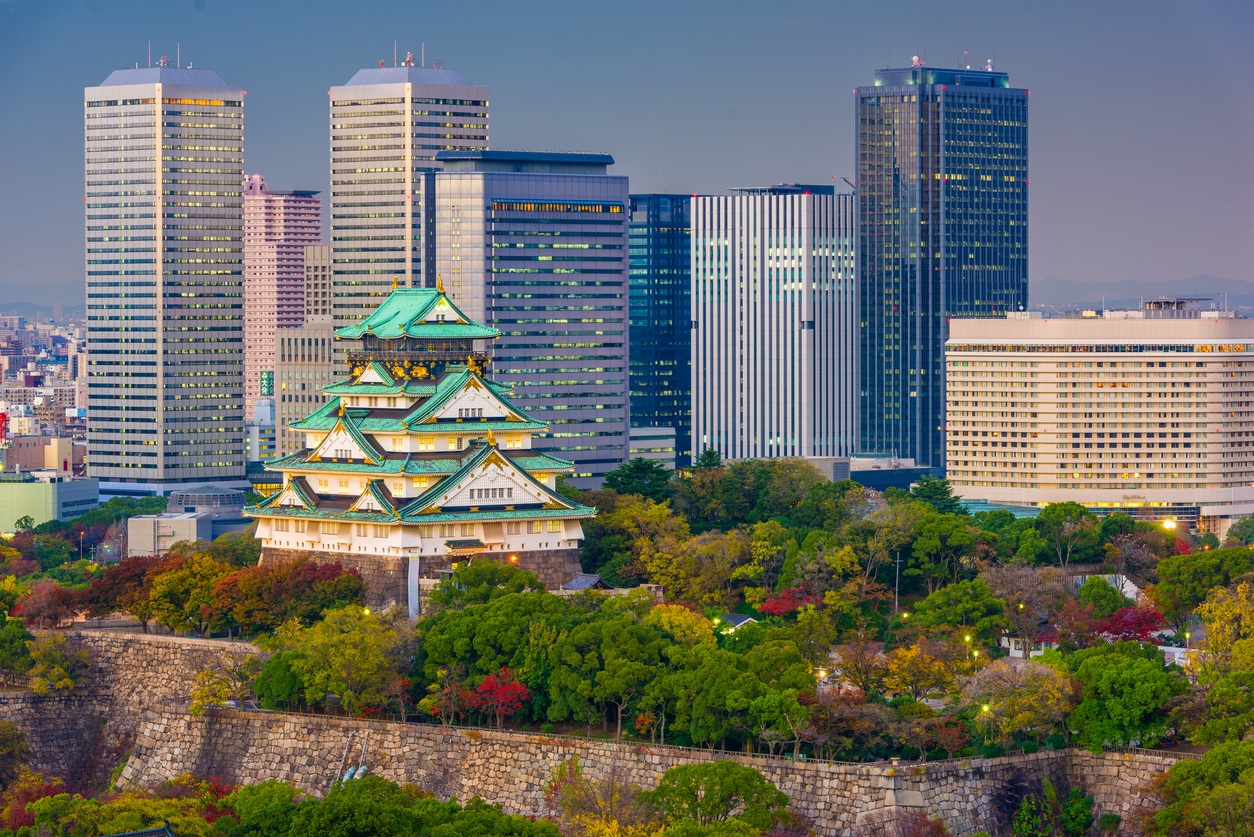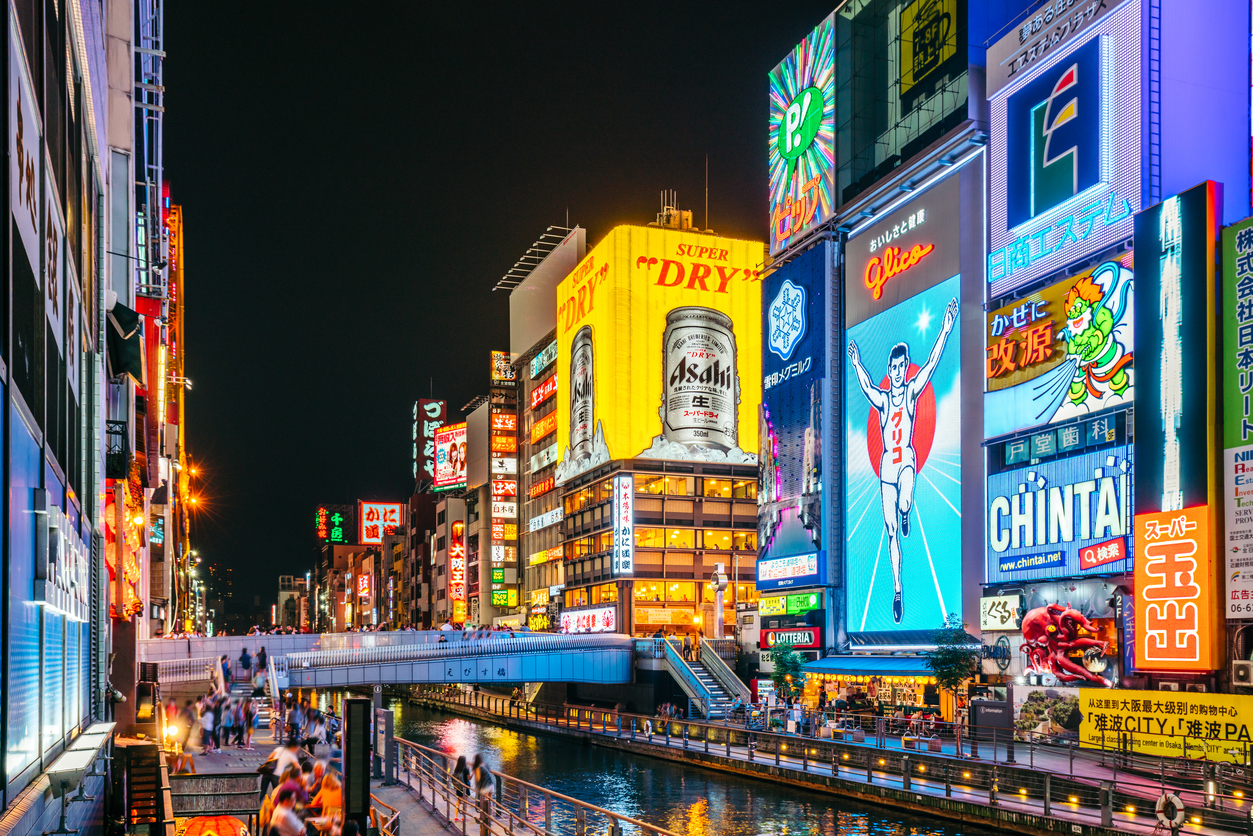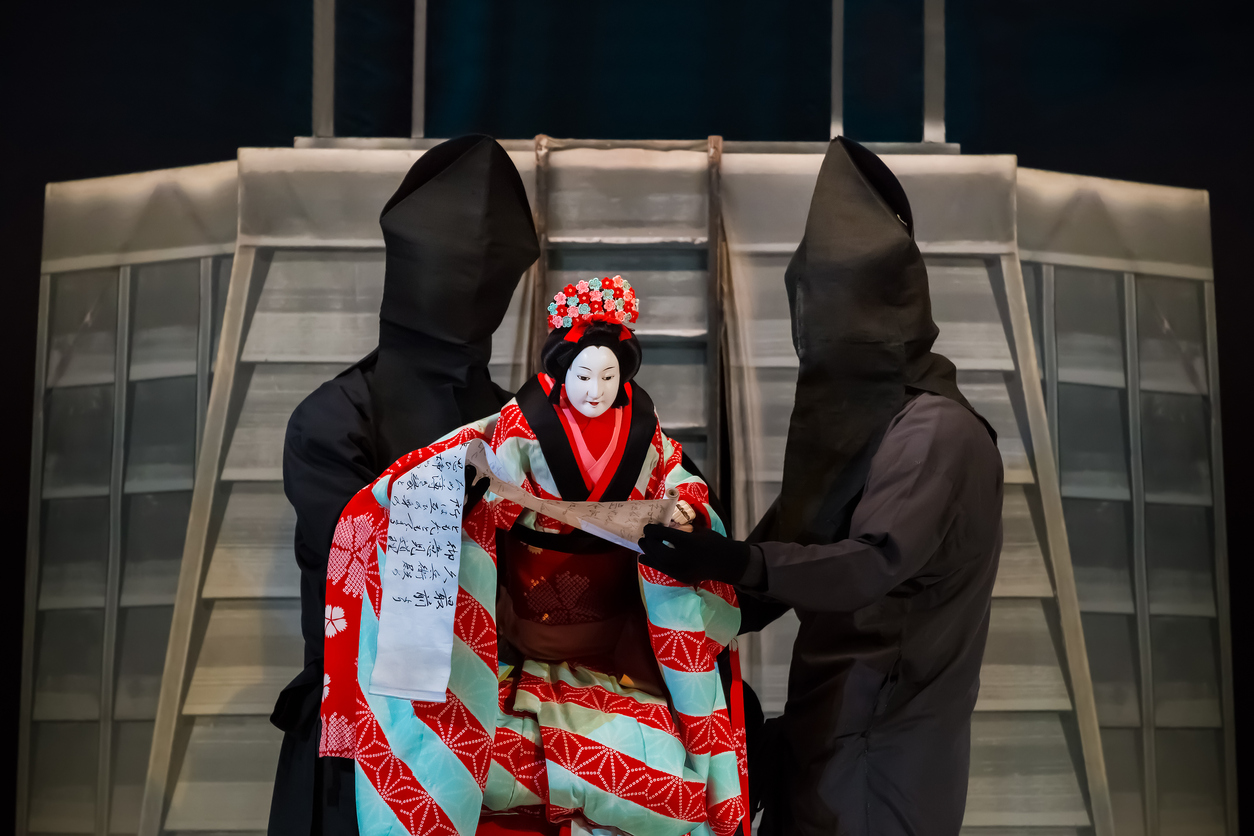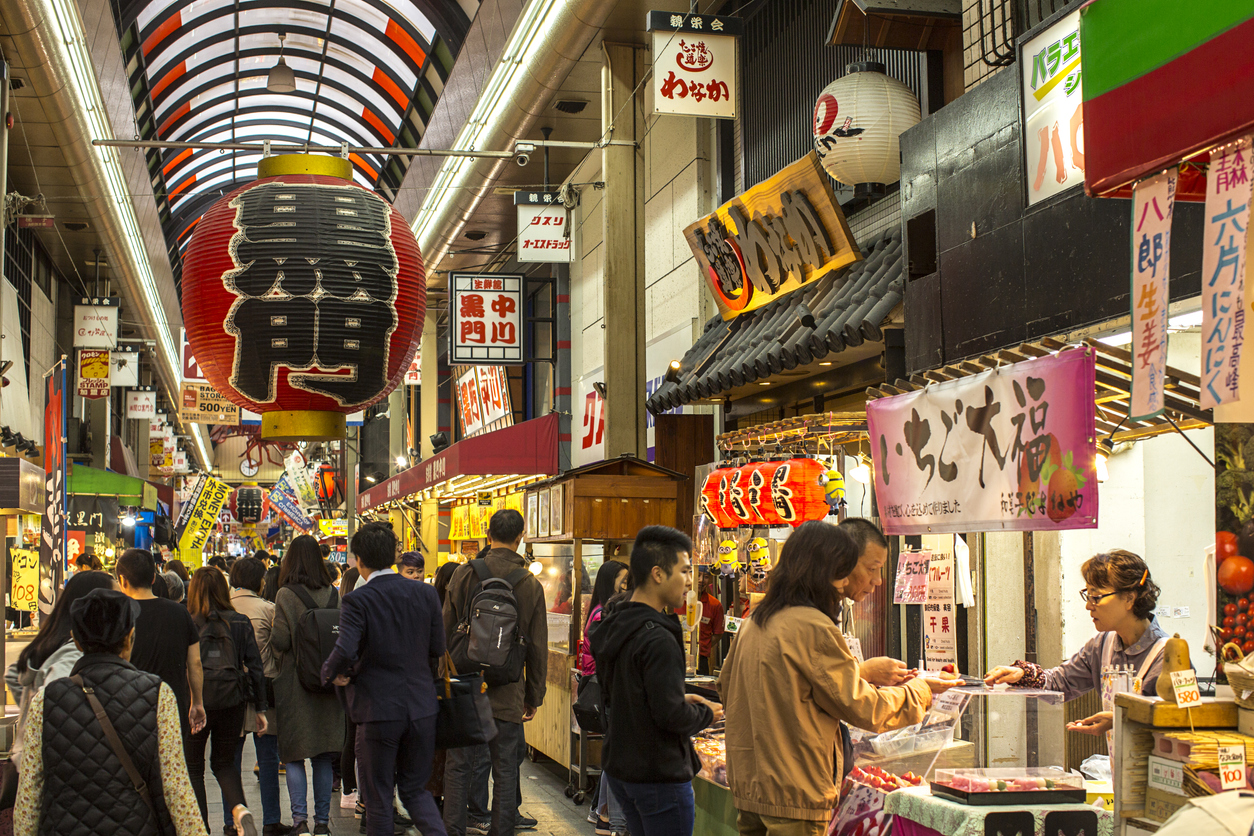 Sean Pavone
Sean Pavone
Despite being Japan‘s second largest metropolis (pop. 2.7 million, metro area 12 million), Osaka isn’t usually high on the list of most visitors. But those interested in exploring the country’s exciting urban culture should definitely put it on theirs, especially if they’re foodies, because the Big O is known among Japanese as “the nation’s kitchen”.
Two and a half hours southeast of Tokyo by bullet train, in Honshu island’s south-central Kansai region (considered the historical heart of Japan), Osaka lies on fertile plains with mild winters and hot/humid summers that were being farmed for rice as far back as the 3rd century BCE, and as early as the 4th century CE this port town had developed into a hub for western Japan. And in the succeeding centuries it only became more important, growing into the country’s economic powerhouse, with a large portion of its population belonging to the merchant class. And it’s pretty much retained that status to this day, with locals being a bit more freewheeling and less conservative than the run-of-the-mill Japanese.
 nikada
nikada
Osaka’s downtown area, called Kita, and nearby Nakanoshima are where most of the city’s highrises are located, along with much of its shopping, dining, and nightlife (more of this is also located in the also central Dōtonbori district, above). The top landmark here is the Umeda Sky Building, a pair of 173-metre (568-foot) towers spanned at the top by a “floating garden” with the best cityscape views in town, and in the basement a mall with markets and eateries recreating the Showa period of a century ago.
It’s not all bright lights, big city, though; there’s also plenty of history and culture here, traditional and otherwise. The top historic must is imposing Osaka Castle (top), dating back to 1583; what’s here today is a reconstruction, and it’s surrounded by a lovely 106-hectare (262-acre) park with various lovely gardens including plum and cherry blossoms. And like many Japanese cities, Osaka’s home to myriad atmospheric shrines and temple, with standouts including the country’s oldest Buddhist temple, Shitennō-ji (593) and one of its oldest Shinto shrines, Sumiyoshi taisha (211); other notables include Tamatsukuri Inari, Ōsaka Tenmangū, and Imamiya Ebisu.
 coward_lion
coward_lion
Top museums and other attractions include the bayside Osaka Aquarium Kaiyukan, with the world’s second largest aquarium tank; the National Museum of Art (NMAO), with a mostly post-World-War-II collection and a variety of temporary exhibitions (for traditional work, check out the Osaka City Museum of Fine Arts); the next-door Osaka Science Museum, complete with planetarium and OMNIMAX theatre; the Museum of Oriental Ceramics; and the 13-story Osaka Museum of History. On the much smaller and quirkier side, foodies might also be interested in the Cup Noodles Museum, with amusing exhibits about instant noodles and even a factory where you can not only watch them being made but design your own cup to take home as a memento. On the performance side, consider taking in a traditional puppet play (above) – exquisite and elaborate, meant for adults rather than children – at the National Bunraku Theatre. (And by the way, near the city you’ll also find Universal Studios Japan, but I daresay you didn’t fly all this way to visit an Asian version of a U.S. theme park.)
 JaysonPhotography
JaysonPhotography
And speaking of things foodie, now we come to where this city shines most deliciously – especially in Dōtonbori, with restaurants and markets offering the best in Japanese “soul food” as well as local specialities such as okonomiyaki (yam-based pancakes stuffed with various ingredients), takoyaki (fried, battered octopus), and oshizushi (block-shaped pressed sushi, with mackerel a favourite). And incidentally, Osaka is also known for its superlative sake!
For street food as well as amazing local culinary colour, don’t miss Kuromon Ichiba market (above; you can also get guided tours here), and for more food porn including the likes of those infamous, astronomically priced “designer melons”, check out the upmarket food halls in department stores such as Daimaru, Hankyu, and Takashimaya. There are also a variety of cooking and other culinary classes and tours on offer in Osaka, from sake tasting to crafting sushi, ramen, teppanyaki, tempura, and more; the site Cookly is an excellent resource for these.
Central Honshu is also home to a number of other fascinating destinations, and if you use Osaka as your base, you can take day or overnight trips to the likes of Kyoto (Japan’s ancient capital for more than a thousand years, well under an hour away) and Hiroshima (less than two hours by train).
Finally, if you do visit, I’d highly recommend picking up and one- or two-day Osaka Amazing Pass, providing unlimited access to three dozen of the top local attractions as well as the public transportation system.
More info: Osaka-Info.jp, InsideOaska.com.
Read this post in Spanish.

